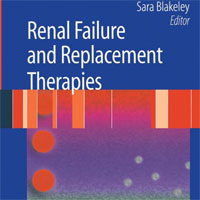Tag: ARF
Epidemiology and Outcomes of Critically Ill Children at Risk for PARDS
The Pediatric Acute Lung Injury Consensus Conference “at-risk for pediatric acute respiratory distress syndrome” criteria identify critically ill children at high risk of pediatric acute respiratory distress syndrome... read more
Renal Failure and Replacement Therapies
Increased recognition of the overlap between critical care and renal medicine, and recent advances in the understanding of acute renal failure (ARF) and the application of renal replacement therapies (RRTs), have brought... read more

Effect of High-Flow Oxygen Therapy vs Conventional Oxygen Therapy on Invasive Mechanical Ventilation and Clinical Recovery in Patients With Severe COVID-19
An overall good trial that supports the use of high flow oxygen therapy in patients with Severe COVID-19. Randomized controlled trial conducted across three centers in Columbia over 5 months from August 2020 to January... read more
Dynamic and Hybrid Configurations for ECMO
Dynamic or hybrid configurations for extracorporeal membrane oxygenation (ECMO) are needed when patient physiology or clinical conditions change. Dynamic configurations included configurations converting from veno-arterial... read more
Bridging the Gap Between Intensivists and Primary Care Clinicians in ECMO for Respiratory Failure in Children
All pediatric clinicians should be aware not only of the potential benefits and complications of ECMO but also that survivors need effective screening, support, and follow-up. The 2009 influenza A(H1N1) pandemic, along... read more
High-flow nasal oxygen in patients with COVID-19-associated acute respiratory failure
The use of high-flow nasal oxygen upon ICU admission in adult patients with COVID-19 related acute hypoxemic respiratory failure may lead to an increase in ventilator-free days and a reduction in ICU length of stay, when... read more
Respiratory Support in Patients with COVID-19
Non-invasive respiratory support could be useful in treating COVID-19-related acute respiratory failure (ARF). A rational use of different techniques (oxygen therapy, CPAP, NIV or HFOT) by a trained pulmonologist could allow... read more
Automated vs. Conventional Ventilation in the ICU
Automated ventilation (AV) appears to reduce the incidence and severity of blood oxygen desaturation during daily nursing procedures (DNPs) in comparison to Conventional Ventilation (CV). Of the 265 included patients,... read more
Respiratory Strategies for Patients with Suspected or Proven COVID-19 Respiratory Failure
The trial objective is to determine if Continuous Positive Airway Pressure (CPAP) or High-Flow Nasal Oxygen (HFNO) is clinically effective compared to standard oxygen therapy in patients with confirmed or suspected COVID-19. The... read more
Development of Persistent Respiratory Morbidity in Previously Healthy Children After ARF
Persistent respiratory morbidity develops in up to potentially 44% of previously healthy children less than or equal to 24 months old at follow-up after acute respiratory failure (ARF) requiring mechanical ventilation. This... read more
Long-Term Health-Related Quality of Life After Venovenous Extracorporeal Membrane Oxygenation
This study examined the long-term health-related quality of life in adult patients treated with venovenous extracorporeal membrane oxygenation (V-V ECMO) for severe acute respiratory failure in Ireland. A retrospective, cross-sectional... read more
Prone Positioning in Nonintubated Patients with COVID-19 and Hypoxemic Acute Respiratory Failure
In this study of patients with COVID-19 and hypoxemic respiratory failure managed outside the ICU, 63% were able to tolerate PP for more than 3 hours. However, oxygenation increased during PP in only 25% and was not sustained... read more
Acute Respiratory Failure in COVID-19: Typical ARDS?
COVID-19 is highly infectious and can lead to fatal comorbidities especially ARDS. There are currently no recommended specific anti-COVID-19 treatments, so supportive treatment is important. Fully understanding the characteristics... read more
COVID-19 Patients with Respiratory Failure: What Can We Learn From Aviation Medicine?
Patients with COVID-19 may present to hospitals and emergency medical services with an atypical form of acute respiratory distress syndrome (ARDS). Although anecdotal, a common clinical pattern has emerged, with a remarkable... read more
Severe Influenza in Critically Ill Patients
The present review summarizes current knowledge on pathogenesis and clinical manifestations of severe influenza. Immunological dysfunction during viral infection correlates with severity and mortality among ICU patients.... read more
High-Flow Nasal Cannula vs. Noninvasive Ventilation
High-flow conditioned oxygen therapy delivered through nasal cannulae and noninvasive mechanical ventilation (NIV) may reduce the need for reintubation. Therefore, Hernández et al set out to test if high-flow conditioned... read more
Effect of Vitamin C Infusion on Organ Failure in Patients With Sepsis and ARDS
In this preliminary study of patients with sepsis and Acute Respiratory Distress Syndrome (ARDS), a 96-hour infusion of vitamin C compared with placebo did not significantly improve organ dysfunction scores or alter markers... read more
Early Mobilization Reduces Duration of Mechanical Ventilation and Intensive Care Unit Stay in Patients With ARF
The introduction of early mobilization for patients with mechanical ventilation (MV) in the ICU shortened MV durations and ICU stays. A multidisciplinary team that includes the patient's family can work together to improve... read more
Implications of Heterogeneity of Treatment Effect for Reporting and Analysis of Randomized Trials in Critical Care
Randomized clinical trials (RCTs) are conducted to guide clinicians' selection of therapies for individual patients. Currently, RCTs in critical care often report an overall mean effect and selected individual subgroups.... read more
Integrating host response and unbiased microbe detection for lower respiratory tract infection diagnosis in critically ill adults
Lower respiratory tract infections (LRTIs) are the leading cause of infectious disease-related deaths worldwide yet remain challenging to diagnose because of limitations in existing microbiologic tests. In critically ill... read more
Noninvasive Ventilation Through the Helmet Can Be Used For Early Mild and Moderate ARDS
Debating data have been published as regards the beneficial or deleterious effect of spontaneous breathing (SB) in comparison to controlled mechanical ventilation (CMV) during acute respiratory failure. Spontaneous breathing... read more
Midazolam Dose Optimization in Critically Ill Pediatric Patients with ARF
This work leveraged available knowledge on non-heritable and heritable factors affecting midazolam pharmacokinetic in pediatric subjects with primary respiratory failure requiring mechanical ventilation, providing the basis... read more









